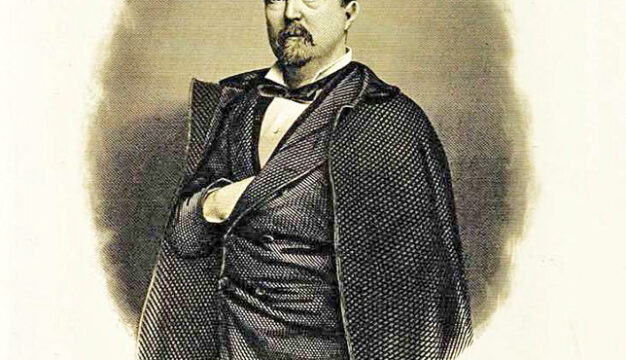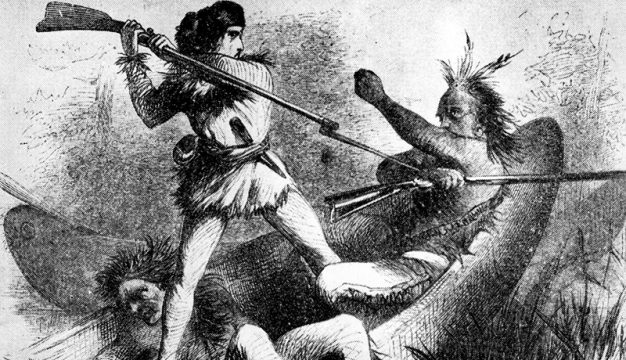Chestnut Jr., J. L
J. L Chestnut Jr. (1930-2008) was an attorney, author, and the first Black lawyer to practice in Selma, Dallas County, in modern times. He played a significant role in the civil rights movement in Alabama during the 1950s and 1960s and was counsel for Black farmers in an important national discrimination case.
Chestnut was born on December 16, 1930, to J. L. Chestnut Sr., who owned a grocery store during the Great Depression, and Geraldine Phillips Chestnut, who was a teacher. Both father and son were named only with initials. He was reared in Selma during the Jim Crow era of segregation. While in high school at the segregated Knox Academy, he began to question the racial restrictions placed on Selma's Black citizens and the legal and cultural white supremacy of the city's social order. He graduated from high school in 1948 and enrolled at Talladega College, a historically Black college in Talladega, Talladega County. After a year, he transferred to Dillard University, a Black college in New Orleans, and received his undergraduate degree in 1953. He enrolled in Howard University Law School in Washington, D.C., in 1953. Also that year, Chestnut married Vivian Davis of Selma. The couple would have six children.
Howard afforded Chestnut an opportunity that he could not have had anywhere else: a chance to work with some of the top African American lawyers in the nation. During his first year, he assisted with preparation of a case that was already before the Supreme Court: Brown vs. Board of Education of Topeka, KS (1954) that outlawed segregation in public schools. This case was a consolidation of five separate cases that had gone before the Supreme Court in 1952. The Court combined the cases and decided to rehear the arguments in December 1953. Chestnut and his classmates worked on this groundbreaking case with the top legal minds in civil rights law at the time; Thurgood Marshall, Herbert Reid, James Naibrit Jr., and Robert Carter, who were all on Howard's faculty and working with the National Association for the Advancement of Colored People (NAACP) Legal Defense Fund (LDF). Chestnut was drafted into the Army the next year and returned to Howard upon discharge in 1956, completing his law degree in 1958.
Because segregation in Selma was rigidly observed and enforced with violence and the law was unequally enforced, Chestnut only reluctantly returned to the city after graduation, opening his law practice in 1959. He was the only Black lawyer in Selma and one of only nine Black lawyers in the state of Alabama at the time. Gradually, he came to see his role in representing the interests of Black people in the Black Belt as a calling, because he realized that Black citizens often did not have adequate legal representation, nor could they expect justice to be served in their behalf in Jim Crow Alabama. He soon started working with other Black lawyers on civil rights cases for the NAACP LDF in the Black Belt and across Alabama.
In 1963, when Selma began organizing and mobilizing local Black citizens for voting rights, Chestnut worked with Bernard and Colia Lafayette to hold a memorial service for the late Dallas County Voters League (DCVL) president Sam Boynton. This program would serve as the first modern civil rights mass meeting in Selma. The Lafayettes, members of the Student Nonviolent Coordinating Committee (SNCC), also began organizing non-violent demonstrations in Selma that year. From 1963 through 1965, Chestnut represented members of SNCC, DCVL, and the Southern Christian Leadership Conference (SCLC), including its president, Martin Luther King Jr. He was on a team of legal counsel for the marchers during the three Selma to Montgomery voting rights marches in 1965. The Voting Rights Act of 1965 was a result of this organized movement and the national attention that Selma's citizens brought to their disfranchisement.
After the civil rights successes in Selma, Chestnut turned his attention to expanding his law practice. He recruited young lawyers Henry "Hank" Sanders and his wife Rose M. Sanders (who later changed her name to Faya Ora Rose Touré) to Selma to join his law office in 1972. Their firm, Chestnut, Sanders, and Sanders became the largest Black law firm in Alabama and one of the largest law firms in the Southeast. Sanders and Touré would also become civic and political leaders in the region, with Hank Sanders serving in the Alabama Senate from 1983 until 2018 and Faya Ora Rose Touré becoming Alabama's first Black woman judge.
Chestnut again gained national recognition for representing Timothy Pigford of Cumberland County, North Carolina, in Timothy Pigford et al. v. Dan Glickman, Secretary, United States Department of Agriculture (1999). The case yielded the largest class-action lawsuit settlement on behalf of Black farmers who sued the U.S. Department of Agriculture (USDA) for years of discrimination when applying for USDA loans and other assistance.
In the last decade of his life, Chestnut continued to practice law and represent clients in civil rights and desegregation suits. He represented local citizens in cases aimed at ending discrimination in jury service and civil service employment in Selma and Dallas County. He also represented Albert Turner and Evelyn and Spencer Hogue Jr. in a notable mid-1980s voting rights case. Collectively known as "the Marion Three," they were indicted by U.S. Attorney Jeff Sessions on charges of mail fraud and illegally tampering with paper absentee ballots and were later acquitted. Chestnut received many awards and honors for his body of work and his contributions to the civil rights movement, including an honorary doctorate from St. Michael College in Vermont. After an extended illness, he died on September 30, 2008, and was buried in Lincoln Cemetery in Selma. In 2021, the Dallas County Commission renamed their courthouse annex the J. L. Chestnut/Bruce Boynton Judicial Building to honor Chestnut and fellow Selma civil rights attorney Bruce C. Boynton.
Further Reading
- Chestnut, J. L., Jr., and Julia Cass. Black in Selma: The Uncommon Life of J.L. Chestnut, Jr. New York: Farrar, Straus, and Giroux, 1990.
- Thornton, J. Mills, III. Dividing Lines: Municipal Politics and the Struggle for Civil Rights in Montgomery, Birmingham, and Selma. Tuscaloosa: University of Alabama Press, 2002.
- Fitts, Alston, III. Selma: A Bicentennial History. Tuscaloosa: University of Alabama Press, 2017.






